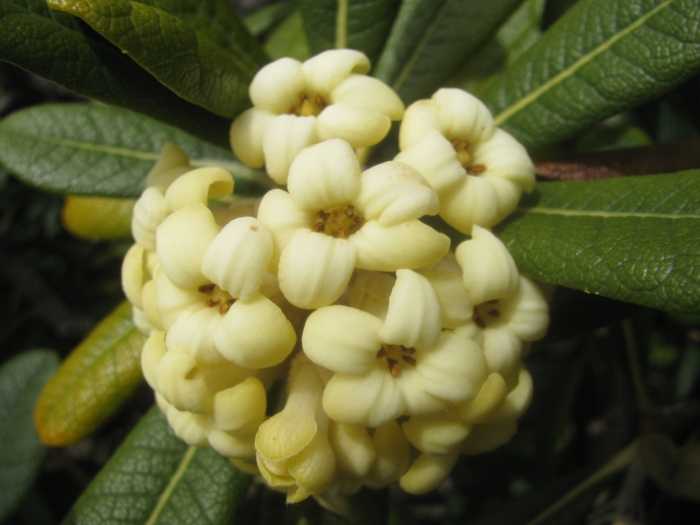Ho’Awa
(Pittosporum confertiflorum)
Ho’Awa (Pittosporum confertiflorum)
/
/

Forest and Kim Starr
CC BY 2.0
Image By:
Forest and Kim Starr
Recorded By:
Copyright:
CC BY 2.0
Copyright Notice:
Photo by: Forest and Kim Starr | License Type: CC BY 2.0 | License URL: https://creativecommons.org/licenses/by-sa/2.0/ | Uploader: Starr Environmental | Publisher: Flickr |






























Estimated Native Range
Summary
Pittosporum confertiflorum, commonly known as Ho’awa, is an evergreen tree or large shrub native to the montane rainforests and cloud forests of the Hawaiian Islands. It typically grows to a height of 20-30 feet (6-9 meters) and a width of 8-12 feet (2.4-3.7 meters). The plant features a dense, rounded canopy with glossy, leathery leaves that are dark green in color. Ho’awa is notable for its small, fragrant flowers that are cream to white, appearing in clusters throughout the year, with peak blooming in the spring. The flowers are somewhat showy due to their fragrance and abundance. After flowering, it produces small, woody capsules that split open to release seeds.
Ho’awa is valued for its lush foliage and fragrant flowers, making it a desirable plant for tropical gardens, as a screen or hedge, and in naturalistic plantings. It is relatively easy to maintain, requiring little pruning. In cultivation, it prefers part shade but can tolerate full sun in cooler, moist climates. It thrives with medium to high water requirements and does best in well-draining soils with rich organic matter. While it is not commonly found in the nursery trade outside of Hawaii, it is an important species for local horticulture and conservation. Potential problems include susceptibility to scale insects and root rot in poorly drained soils. It is not known to be invasive outside its native range, but as with all non-native plantings, care should be taken to monitor its growth and spread.CC BY-SA 4.0
Ho’awa is valued for its lush foliage and fragrant flowers, making it a desirable plant for tropical gardens, as a screen or hedge, and in naturalistic plantings. It is relatively easy to maintain, requiring little pruning. In cultivation, it prefers part shade but can tolerate full sun in cooler, moist climates. It thrives with medium to high water requirements and does best in well-draining soils with rich organic matter. While it is not commonly found in the nursery trade outside of Hawaii, it is an important species for local horticulture and conservation. Potential problems include susceptibility to scale insects and root rot in poorly drained soils. It is not known to be invasive outside its native range, but as with all non-native plantings, care should be taken to monitor its growth and spread.CC BY-SA 4.0
Plant Description
- Plant Type: Tree, Shrub
- Height: 20-30 feet
- Width: 8-12 feet
- Growth Rate: Moderate
- Flower Color: Cream, White
- Flowering Season: Winter, Spring, Summer, Fall
- Leaf Retention: Evergreen
Growth Requirements
- Sun: Part Shade
- Water: Medium, High
- Drainage: Medium
Common Uses
Bee Garden, Fragrant, Low Maintenance
Natural Habitat
Montane rainforests and cloud forests
Other Names
Common Names:
Scientific Names: , Pittosporum confertiflorum, Pittosporum confertiflorum var. mannii, Pittosporum cauliflorum, Pittosporum cladanthum, Pittosporum halophiloides, Pittosporum cladanthum var. reticulatum, Pittosporum confertiflorum var. microphyllum, Pittosporum cauliflorum var. pedicellatum, Pittosporum cauliflorum f. pedicellatum
GBIF Accepted Name: Pittosporum confertiflorum A.Gray